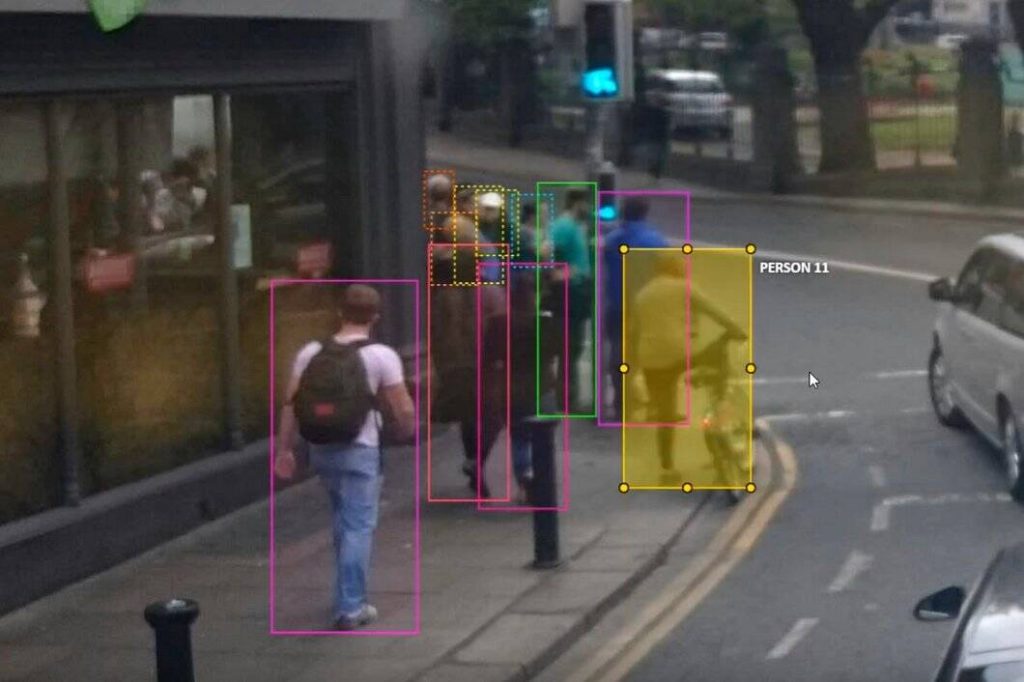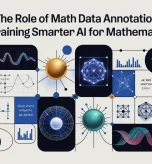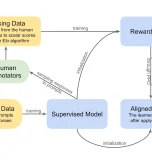As artificial intelligence (AI) and computer vision technologies advance, the demand for high-quality image annotation continues to surge. From autonomous vehicles to precision agriculture, accurate data annotation is the backbone of effective machine learning models. This comprehensive guide explores everything you need to know about image annotation, including its importance, tools, data sources, types, techniques, and how to leverage it for AI success.
Get ready to elevate your understanding of image annotation and empower your AI projects.
Let’s dive in!
What is Image Annotation?
Image annotation is the process of labeling or tagging images to provide context and meaning that machine learning algorithms can interpret. This critical step in data preparation enables AI systems to recognize patterns, identify objects, and make informed predictions. By attaching metadata such as labels, coordinates, or pixel-level classifications image annotation transforms raw visual data into structured datasets for training computer vision models.
Annotations vary in complexity, from simple bounding boxes that outline objects to intricate semantic segmentation that labels every pixel in an image. The choice of annotation type depends on the project’s goals, with more detailed annotations offering greater precision for applications like medical imaging or autonomous driving.
At Aya Data, we’re revolutionizing AI training data with expert image annotation services that deliver precision and scalability. Our skilled annotators and advanced tools ensure your computer vision models are trained on high-quality, actionable datasets, accelerating your path to AI-driven innovation.

There are several types of image annotation. They can be as simple as bounding boxes, where you draw a box around the object of interest, or as complex as semantic segmentation, where each pixel in the image is labeled according to the object it belongs to. The latter is particularly helpful in tasks where you need to understand the image at a granular level, such as autonomous driving or medical imaging.
The choice of annotation type depends on your specific needs. More detailed annotations often require more time and resources, but they can also provide more precise information for your machine learning models.
Why Image Annotation Matters in 2025
High-quality image annotation is essential for:
- Improved Model Accuracy: Precise annotations enable AI models to learn patterns effectively, enhancing prediction accuracy.
- Real-World Applications: From detecting crop diseases in agriculture to identifying anomalies in medical scans, annotated data powers diverse AI solutions.
- Scalability: Well-annotated datasets support scalable AI systems that adapt to complex, real-world scenarios.
What Do You Need for Image Annotation?
To achieve high-quality image annotation, three core components are critical:
Diverse and Representative Image Data
A robust dataset is the foundation of effective image annotation. Diverse images or videos ensure your AI model generalizes well across real-world scenarios. Key considerations include:
- Images from varied sources, environments, and lighting conditions.
- A broad range of objects, angles, and resolutions.
- Inclusion of edge cases to improve model robustness.
Sourcing diverse data prevents bias and enhances the performance of computer vision models in applications like facial recognition, autonomous navigation, and geospatial analysis.
Expert Data Annotators
Professional annotators bring precision, domain expertise, and contextual understanding to the annotation process. Their role goes beyond labeling they ensure annotations align with project goals, whether for object detection in drones or semantic segmentation in medical imaging. Skilled annotators:
- Assign accurate class labels for consistent training data.
- Handle complex tasks like instance segmentation with precision.
- Maintain quality through rigorous reviews and industry-standard workflows.
At Aya Data, our team of expert annotators leverages domain knowledge to deliver high-quality annotations. From annotating 250,000 road images for crack detection to creating voice-bots (Aya Speech) in African languages, we transform raw data into actionable insights for your AI models.
Advanced Annotation Tools
The right software streamlines annotation workflows and enhances accuracy. When selecting an image annotation tool in 2025, prioritize:
- Support for multiple annotation types (e.g., bounding boxes, polygons, semantic segmentation).
- Automation features like AI-assisted labeling to boost efficiency.
- Compatibility with diverse image and video formats (JPEG, PNG, MP4).
- Integration with machine learning pipelines for seamless model training.
Popular tools like CVAT, Labelbox, and SuperAnnotate offer robust features for modern annotation needs, with CVAT being a top choice for its open-source flexibility and automation capabilities.
Where to Source Quality Image Data
High-quality image data is critical for effective annotation. Here are two primary sources:
Open Datasets
Open datasets provide pre-annotated images that are ideal for kickstarting projects. Notable options include:
- COCO Dataset: Contains 2.5 million labeled instances across 328,000 images for object detection and segmentation.
- Waymo Open Dataset: Offers rich self-driving car data for autonomous vehicle applications.
- Cityscapes Dataset: Features detailed urban scene segmentation for autonomous driving.
- Open Images Dataset: Includes approximately 9 million pre-annotated images for diverse use cases.
These datasets are accessible, cost-effective, and widely used for benchmarking computer vision models.
Web Scraping
Scraping web data allows you to curate custom datasets tailored to your project. Sources include:
- Unsplash: High-resolution, copyright-free images.
- Flickr: A vast database of open-source images.
- ImageNet: Designed for visual object recognition research.
Always ensure compliance with copyright laws and usage permissions when scraping web data.
Types of Image Annotation
Image annotation encompasses several techniques, each suited to specific use cases:
Image Classification
Image classification assigns a single label to an entire image based on its content. For example, labeling an image as “cat” or “dog” trains models to categorize images. It’s ideal for applications like content moderation or e-commerce product cataloging.
Object Detection
Object detection identifies and locates multiple objects within an image using bounding boxes. Methods like YOLO, Faster R-CNN, and SSD balance speed and accuracy for tasks such as autonomous driving or security surveillance.
Semantic Segmentation
Semantic segmentation labels every pixel in an image according to its object category, providing granular insights. It’s critical for:
- Autonomous Vehicles: Categorizing pixels as road, pedestrian, or vehicle.
- Medical Imaging: Identifying tissues or anomalies in scans.
- Aerial Imaging: Classifying land use or vegetation.
Instance Segmentation
Instance segmentation distinguishes individual instances of the same object class, such as labeling “car 1” and “car 2” in an image. This precision is vital for object counting or tracking in surveillance and robotics.
Panoptic Segmentation
Panoptic segmentation combines semantic and instance segmentation, labeling both objects and background regions. It’s used in complex scene understanding for autonomous driving and augmented reality.
Techniques for Image Annotation
Several techniques enhance the precision and efficiency of image annotation:
Bounding Boxes
Bounding boxes encase objects in rectangular shapes, defined by:
- Coordinates: Top-left and bottom-right points (x1, y1, x2, y2) or center-based (cx, cy, w, h).
- Labels: Tags like “tree” or “person.”
- Best Practices: Ensure boxes fully enclose objects without excess space and maintain consistency across annotators.
Polygons
Polygons outline irregular shapes with greater accuracy than bounding boxes, ideal for objects like starfish or machinery. They require more time but provide precise annotations for complex shapes.
Polylines
Polylines trace complex paths or boundaries, such as roads in satellite imagery or veins in medical scans. They offer flexibility and precision for linear features.
Landmarking
Landmarking marks key points, such as facial features for recognition or structural points in robotics. It demands high precision to avoid misinterpretations.
Masking
Masking creates binary masks to isolate objects or regions, enhancing segmentation tasks. It’s widely used in medical imaging and object tracking for pixel-level accuracy.
Best Practices for Image Annotation in 2025
To maximize the effectiveness of your image annotation:
- Ensure Consistency: Use clear guidelines and regular quality checks to maintain uniform annotations.
- Leverage Automation: Use AI-assisted tools like CVAT’s automated labeling to reduce manual effort.
- Incorporate Domain Expertise: Partner with annotators skilled in your industry, such as agriculture or healthcare, for context-aware annotations.
- Prioritize Data Diversity: Include varied datasets to improve model generalization.
- Monitor Quality: Implement rigorous quality assurance processes to eliminate errors.
Why Partner with Aya Data?
At Aya Data, we’re building the future of AI training data with expert annotation services that empower businesses to achieve their AI goals. Our global team of skilled annotators and advanced tools deliver:
- Precision: High-quality annotations for applications like autonomous vehicles, precision agriculture, and medical imaging.
- Scalability: Flexible workflows to handle large-scale datasets, from 250,000 road images to complex vascular scans.
- Industry Expertise: Tailored solutions for sectors like healthcare, agriculture, and geospatial analysis.
- Ethical AI: Compliance with ISO, HIPAA, GDPR, and SOC standards, ensuring fair pay and training for annotators.
Whether you need bounding box annotations for crop monitoring or semantic segmentation for urban planning, Aya Data transforms raw data into high-quality training datasets that drive AI innovation. Ready to elevate your AI project? Contact us for a free pilot!
Conclusion
Image annotation is the cornerstone of computer vision, enabling AI models to interpret the visual world with precision. By understanding annotation types, techniques, and best practices, businesses can build robust datasets that power cutting-edge AI applications. Partnering with a trusted provider like Aya Data saves time, ensures quality, and accelerates your AI journey. For more information or to start your image annotation project, contact us at to learn more.
Frequently Asked Questions (FAQ)
What is image annotation and why is it important for AI?
Image annotation is the process of labeling images with metadata to help AI and machine learning models recognise objects, patterns, and contexts. It is essential for building accurate computer vision applications such as medical imaging, autonomous vehicles, and facial recognition.
What are the different types of image annotation services?
Common types include bounding boxes, semantic segmentation, polygons, keypoints/landmarks, and 3D cuboids. Each type serves a unique purpose depending on the AI project, such as object detection, medical image analysis, or autonomous driving.
How does image annotation outsourcing benefit AI projects?
Outsourcing image annotation saves time, reduces costs, and provides access to skilled annotators with domain expertise. It also ensures large-scale data labeling can be completed faster and with higher accuracy, especially for industries like healthcare, retail, and automotive.
What is the best way to annotate images for machine learning?
The best way depends on your project goals. For simple object detection, bounding boxes may be enough. For high-precision AI applications like medical imaging, semantic segmentation or polygon annotation is more effective. Partnering with experienced providers like Aya Data ensures both accuracy and compliance.
What tools are used for image annotation in computer vision?
There are many tools available, ranging from open-source platforms to advanced enterprise solutions. The best tools support features like polygon labeling, segmentation, and integration with AI pipelines. Choosing the right tool depends on project complexity and data security needs.
How is image annotation used in deep learning?
In deep learning, annotated images are used to train neural networks to recognise patterns and make predictions. For example, annotated X-rays can help train AI models to detect diseases, while labeled road images train self-driving car systems.
What is the difference between manual and automated image annotation?
Manual annotation relies on human annotators to label datasets, ensuring accuracy but requiring more time. Automated annotation uses AI-powered tools to speed up the process, though results may require human review for quality assurance. A hybrid approach is often best.
How secure is image annotation for sensitive data like healthcare images?
Reputable providers like Aya Data follow strict compliance standards like HIPAA, GDPR, and DICOM. This ensures patient data is anonymised, securely stored, and only accessed by authorised professionals trained in medical data handling.
What industries benefit most from image annotation services?
Industries that rely heavily on computer vision benefit most, including healthcare, autonomous vehicles, retail, agriculture, and security. Each industry requires a specialised approach to data labeling to meet accuracy and compliance standards.
How can I choose the best image annotation service provider?
When selecting a provider, look for domain expertise, compliance with data privacy regulations, scalability, tool capability, and quality assurance processes. Providers like Aya Data combine industry knowledge with strict compliance frameworks to deliver high-quality annotations.






